Tomatoes are one of the most rewarding foods to grow in your own backyard. No backyard? No problem! Growing tomatoes in pots is a simple way to make use of your soilless spaces and provide food for you and your family. If you’ve been frustrated in growing tomatoes successfully in the past, it can also be a way to more easily manage the conditions of your soil.
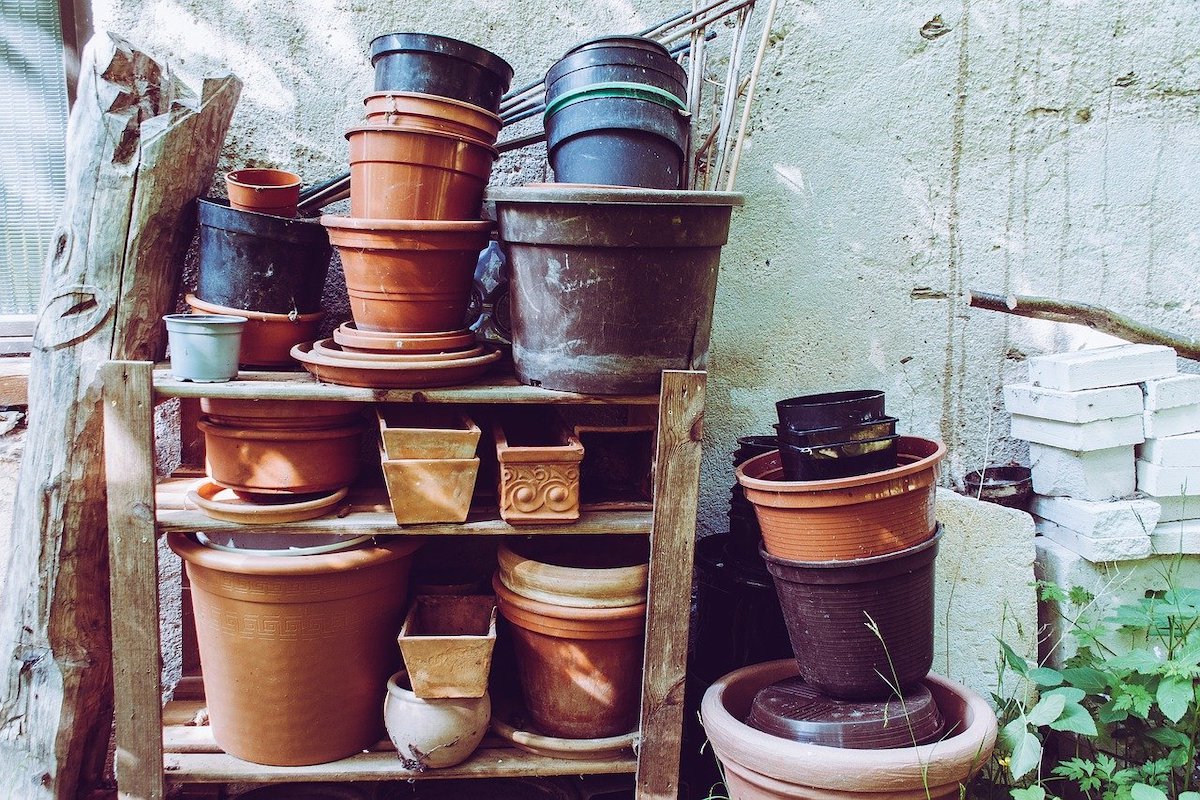
Growing Tomatoes in Pots
Benefits of Container Growing
You can grow food without garden space
If you don’t have a ton of garden space, growing plants in pots can be an excellent solution to getting you homegrown food. Suddenly a balcony or patio becomes a growing space!
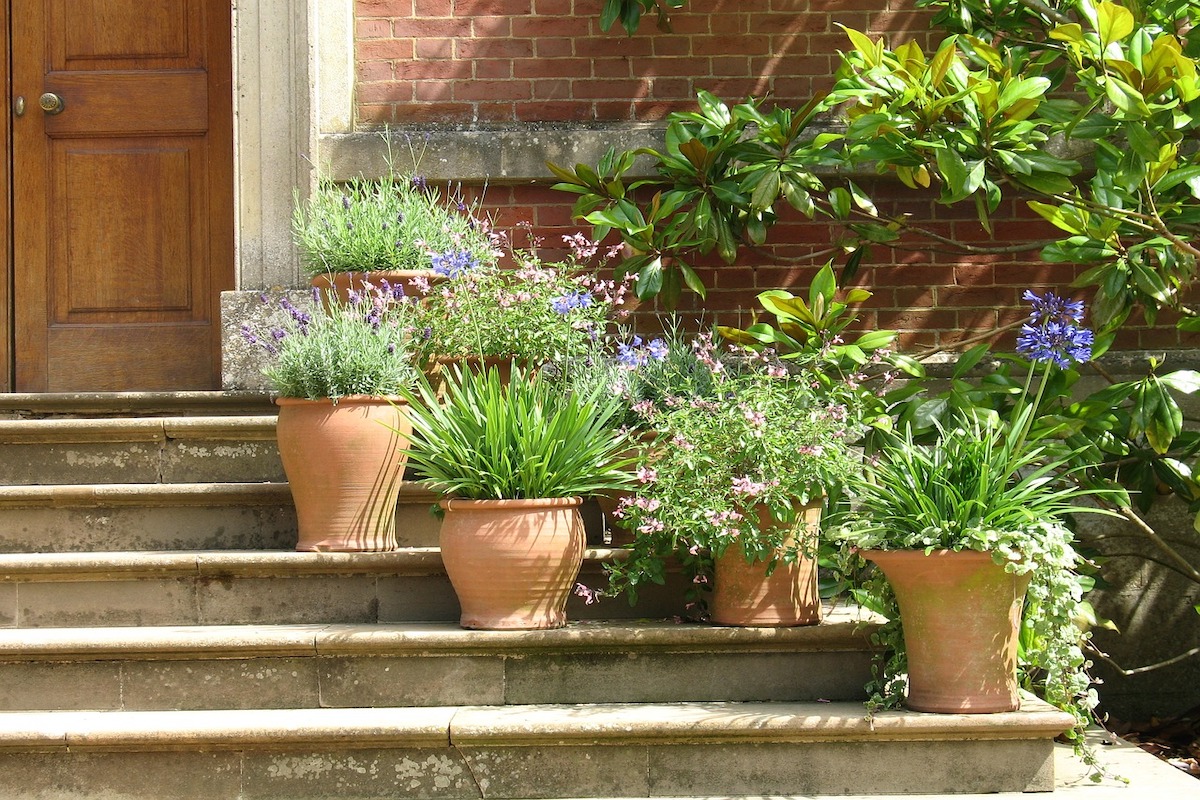
It can help protect against disease
Since you’re starting with fresh potting soil, your plants will be better protected against diseases that might be living in your ground soil. Using fresh potting soil will ensure that your plants get a healthy start and that you’re able to better control the conditions of your soil.
You can easily provide good drainage
Dealing with compact garden soil? Growing in pots allows you to mix or buy your own growing medium based on a plant’s needs. Choosing a pot with sufficient drainage will also benefit your plant’s growth.
You can move your tomato plant to an ideal location
Having a mobile garden allows you to move specific plants to sites that provide them with what they need in terms of sunlight, temperature, and space. Being able to adjust the location of your plants based on how they are responding to their environment is an advantage of a container garden.
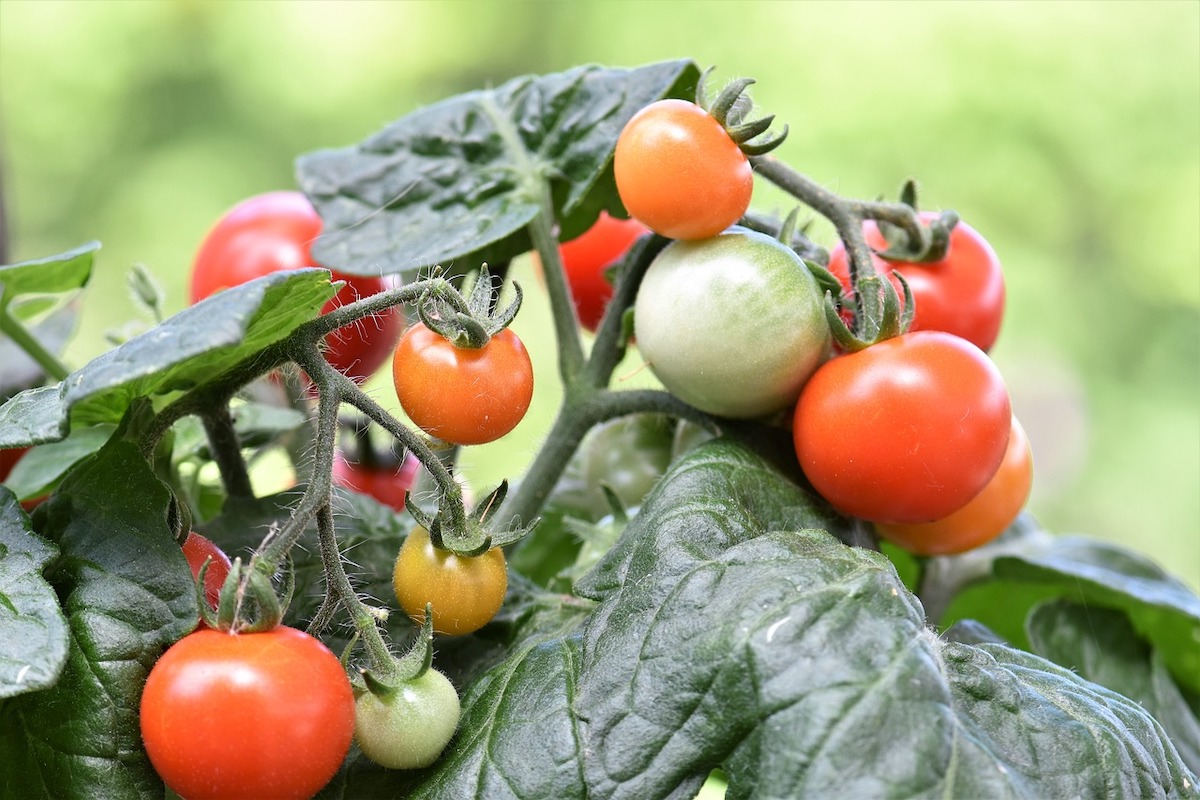
Choosing a Pot
There are many variations of garden pots on the market, and there are a few key aspects to consider before making a choice between them. Most importantly, ensure that your pot has sufficient drainage.
Size: I recommend a 7-15 gallon pot for growing one tomato plant. The size can be on the smaller end if you are choosing to grow determinate varieties, while indeterminate varieties will benefit from the additional space and growing medium. We talk about the differences between the two types of tomatoes here.
Material: My favorite containers for growing tomatoes are fabric grow bags. They are lightweight, flexible, and successful at naturally “air pruning” the roots. Their porous material supports airflow and allows for the roots to be naturally pruned at the edges of the pot which avoids a circling of the roots that can lead to a root-bound plant. The permeability of the fabric promotes drainage and prevents “sitting” water.
Other options include plastic and terra cotta. An advantage to plastic is that during the cooler times of the year, it can help hold in heat. Still, the disadvantages lie in its nonporous material and usually smaller drainage holes. Consider drilling additional holes in the bottom if you choose a plastic pot.
If we’re talking about aesthetics, terra cotta is the superior choice in my opinion. It is also a porous material that allows for air and water to move through it (although not as well as fabric). If you’re concerned about minimizing plastic use in the garden, terra cotta is made from clay.
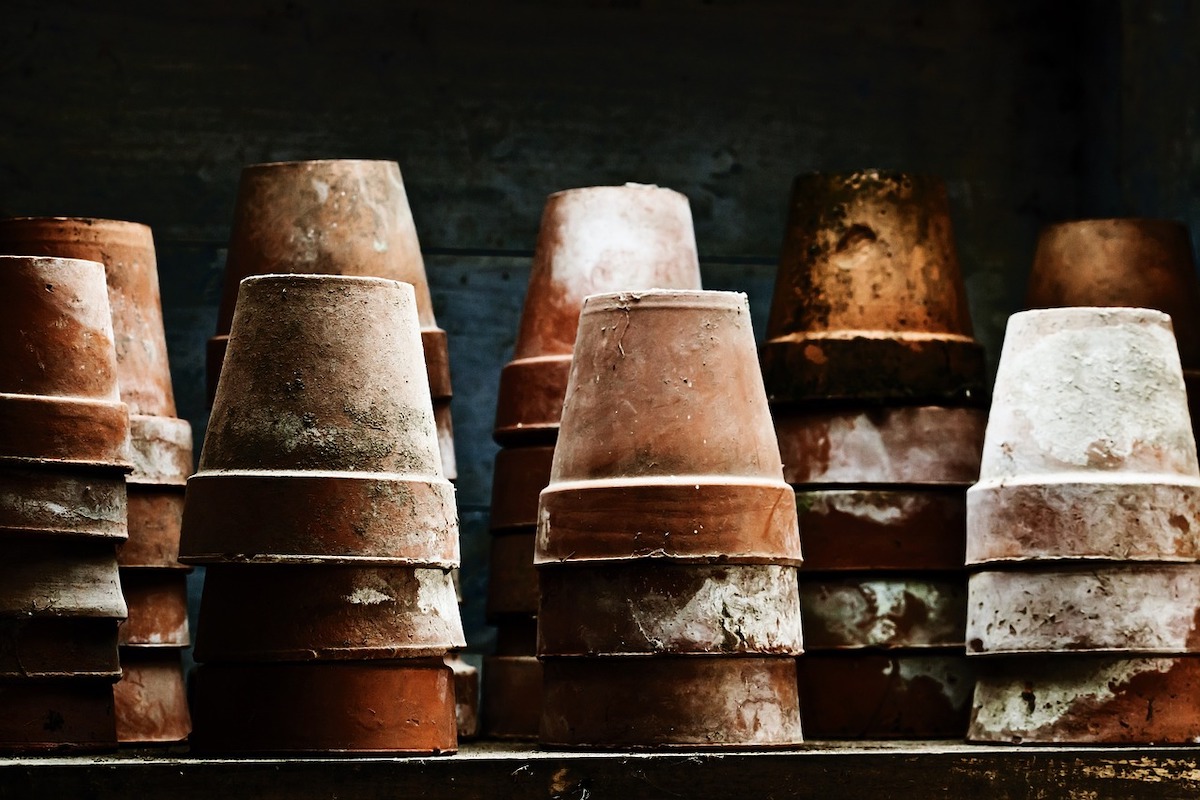
Tips for Growing Tomatoes in Pots
Give It Sun
Tomato plants require a minimum of 6 hours of full sun, but providing 8-10 hours is even better. They thrive in full sun like other members of the Solanum family. Being a fruiting plant, they especially love a nice burst of morning sun.
Use Quality Soil
The quality of your soil is best defined by its structure and chemistry. You can buy good quality potting soil or make one at home. The additions of peat moss or coco coir and perlite or vermiculite to your homemade mix help provide an ideal structure. A well-rotted compost should provide excellent nutrition for your plants.
Plant Deeply
Unlike many plants transplanted into the garden, tomato seedlings like to be planted below the soil surface. You can plant them as deeply as the first set of true leaves. This deep planting will encourage new roots to form along the stem and help develop an even stronger plant. Make sure to clear the sets of leaves closest to the soil surface to help prevent water and soil from splashing onto the bottom leaves.
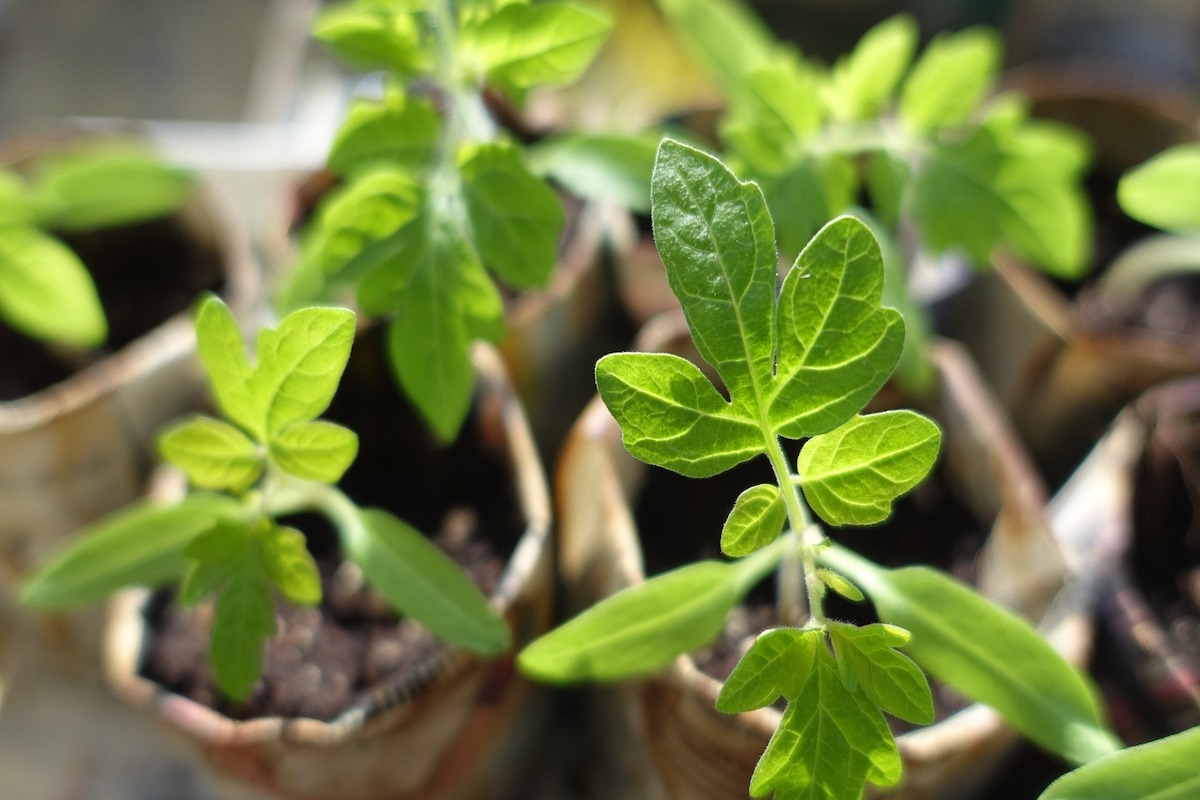
Water With Consistency
Tomato plants are heavy drinkers, and they prefer deep watering less frequently. Depending on your climate, this could still mean every day. Pots tend to dry out quicker than garden beds or in-ground plantings, so be diligent about checking your plants daily. When your plants begin to bear fruit, they will require even more water.
Mulching (I use woodchips or straw) with a layer of 1-2 inches of organic matter will increase the water retention of your soil. Just be sure to leave a little space around the base of the stem.
Support Your Plant
Just like tomatoes in garden beds or the ground, your plants will need some kind of support. Cages, stakes, or larger trellises with ties/clips are all possibilities to keep the branches and fruits of your plants supported.
Fertilize Throughout The Season
About 6 weeks into your plant’s growth, the addition of a quick-release liquid fertilizer is recommended. Tomatoes are heavy feeders, and a weekly application of a balanced fertilizer such as fish emulsion or kelp will keep them strong. In general, tomatoes will benefit from a boost in phosphorous when they are developing roots, nitrogen when they are developing foliage, and potassium when they are developing fruit.
FAQs (Frequently Asked Questions)
For both varieties, one plant per pot is usually sufficient. For indeterminate varieties, consider larger pots.
Tomatoes in pots may require more frequent watering than those in the ground. Water when the top inch of soil feels dry, and ensure proper drainage to prevent waterlogged roots. During our hot season, we water every day, and during our cooler season we water every 2-3 days.
Pruning helps manage the plant’s size and encourages air circulation. Remove suckers on indeterminate varieties and any yellowing or diseased leaves on both varieties. You want to limit your pruning for determinate varieties.
Yes, you can grow dwarf or determinate tomato varieties indoors. Ensure they receive adequate sunlight or use supplemental grow lights.
Indoor-grown tomatoes may require manual pollination. Gently shake the plants or use a small brush to transfer pollen between flowers.
More Info on Growing & Using Tomatoes
Tomatoes are one of the most fun plants to grow and cook with. Their versatility makes them a garden staple, and we’re here to help you make that a garden reality.


Leave a Reply